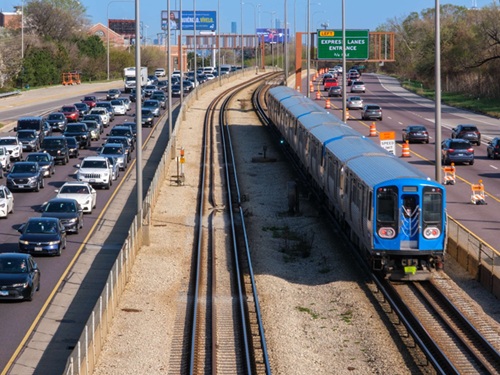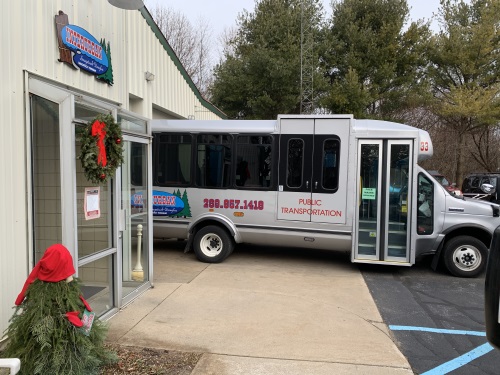For many of the tens of thousands of people living in sparsely populated communities across the country, rural transit is the only travel option available – and the advent of the COVID-19 pandemic strained that lifeline like never before.
[Above photo via the Michigan DOT.]
Andrea “Andy” Brush knows that better than anyone does. A 25-year veteran of the Michigan Department of Transportation, Brush serves as a manager within the agency’s Office of Passenger Transportation or OPT.
The OPT is responsible for allocating federal and state funds for transit programs and it provides financial oversight, procurement and technical assistance to the local and regional transit agencies, authorities, and companies serving Michigan residents in every corner of the state.
Brush explained in an interview with the AASHTO Journal that keeping rural transit buses operating became “infinitely” more difficult due to COVID-19.
“When buses stop rolling, people’s lives can come to a halt, too,” she said – noting that she has never faced a crisis of greater magnitude in her two plus decades of service with Michigan DOT than the one posed by COVID-19.

“We had to make sure transit agencies were able to get people to their essential jobs, medical appointments and where they needed to go—so the agencies we work with began doing what they could to provide these services,” Brush recalled. “Some added plastic shower curtains with duct tape and others built full Plexiglas enclosures to protect their drivers” from exposure to COVID-19.
“Most agencies stopped collecting fares and some that did not stop added contactless fare technology,” she added. “They would have passengers enter from the rear of the bus to help protect both the riders and the drivers. And they stepped up on sanitation and handed out thousands of free facemasks.”
Brush added that while “humbled” by the experience of coping with the transit impacts of COVID-19, she’s also been pleased with the “all hands on deck approach” Michigan DOT and rural transit providers across the state took during the pandemic – keeping buses operating, especially in Michigan’s rural locales.
She noted that the rural transit providers working with Michigan DOT had the option to shut down their operations – but none did.

“Every driver knows what a difference they make in their community,” Brush emphasized. “And they’re proud to serve. They stepped up and did what was needed to make sure people were getting where they needed to go and getting the care and services they needed.”
She noted that looking back on the early days of the pandemic, one of the best things OPT did was to use a social media platform to connect itself to rural transit agencies.
“When the pandemic first hit OPT had daily conversations with our transit agencies—keeping them up to speed, letting them know what was happening,” Brush explained. “We set up a [Microsoft] Teams page so they could post and share different ideas about what they were doing and what was working.”
That communication channel proved vital for helping distribute Coronavirus Aid, Relief, and Economic Security or CARES Act funding when it became available in early spring.
The $2 trillion CARES Act – passed in March 2020 – provided $25 billion to transit agencies to help to prevent, prepare for, and respond to the COVID-19 pandemic. Brush said Michigan’s share of those funds for rural public transit totaled $73 million.
“We’re using those funds to reimburse rural transit providers for a portion of their eligible expenses,” Brush said. “We’re also using some of the money to support a series of new programs including a statewide rural transit emergency preparedness plan. This pandemic has made it clear to everyone just how essential rural transit is, and everyone agrees that we need to be ready if something like this ever happens again.”
According to Brush, while more millennials are using transit in Michigan, seniors are still the most dependent on transit, especially in rural communities.

“A lot of our rural agencies were already providing incidental meal deliveries – but they really stepped up and are doing a lot more deliveries,” Brush said. “Drivers are providing prescriptions and package deliveries. One unique thing some agencies did was to have their drivers go into the grocery stores and purchase groceries for people, then take the bags of groceries to their customers, instead of taking the customers to the stores.”
Yet as the COVID-19 death toll and infection rate continue to climb, transit agencies know that the battle against this virus is far from over.
”This is not going away anytime soon,” Brush said in terms of the pandemic. “We’re going to see the effects for perhaps the next couple of years. The fact that Congress has come through with additional emergency relief funds means we’re going to be able to keep essential workers protected and the buses rolling. ”
 Nation
Nation


